Electric bikes (e-bikes) have revolutionised urban commuting, weekend adventures, and eco-friendly travel. However, like any sophisticated machine, they require regular maintenance to ensure longevity, performance, and safety. Whether you're a daily commuter or a weekend enthusiast, this comprehensive checklist will guide you through the essential maintenance tasks to keep your e-bike in top condition.

1. Battery Care: The Heart of Your E-Bike
Charging Best Practices
- Avoid Overcharging: Consistently charging your battery to 100% can degrade its lifespan over time. Aim to keep the charge between 20% and 80% for optimal health.
- Use the Correct Charger: Always use the manufacturer's recommended charger. Using incompatible chargers can risk damaging the battery and void warranties.
- Charge in a Safe Environment: Charge your battery in a dry, cool place, away from flammable materials. Avoid charging on beds or sofas, as overheating can lead to fires.
Storage Tips
- Short-Term Storage: If you're not using your e-bike for a few days, store the battery in a cool, dry place at room temperature.
- Long-Term Storage: For extended periods, store the battery at 50% charge and check the charge level every 6 months. emtbforums.com
2. Tire Maintenance: Ensuring a Smooth Ride
Regular Checks
- Tire Pressure: Maintain tire pressure within the manufacturer's recommended range. Under-inflated tires can cause sluggish performance, while over-inflated tires may lead to blowouts.
- Tire Wear: Inspect tires for signs of wear, cuts, or embedded debris. Replace tires that show significant wear to prevent punctures and ensure safety.
Maintenance Tips
- Lubrication: Apply appropriate lubricants to the valve stems to prevent rust and ensure smooth inflation.
- Rotation: If your e-bike is equipped with multiple tires, rotate them periodically to ensure even wear.
3. Drivetrain and Chain: Keeping the Power Flowing
Cleaning and Lubrication
- Regular Cleaning: Clean the chain and drivetrain components regularly to remove dirt and grime. Use a degreaser and a brush to scrub the chain, cassette, and derailleur.
- Lubrication: After cleaning, apply a suitable lubricant to the chain. Wipe off excess to prevent attracting more dirt.
Inspection
- Chain Wear: Use a chain checker tool to monitor chain wear. Replace the chain when it shows signs of stretching to prevent excessive wear on other drivetrain components.
- Component Alignment: Ensure that the derailleur is properly aligned and that the chain runs smoothly through all gears.
4. Brake System: Safety First
Inspection and Adjustment
- Brake Pads: Check brake pads for wear. Replace them if the thickness is below the manufacturer's recommended minimum.
- Brake Cables: Inspect brake cables for fraying or corrosion. Lubricate them periodically to ensure smooth operation.
Hydraulic Brakes
- Fluid Levels: Check the brake fluid levels and top up if necessary. Low fluid levels can affect braking performance.
- Bleeding: If you experience spongy brakes, the system may need to be bled to remove air bubbles.
5. Motor and Electrical Components: The E in E-Bike
Motor Care
- Cleaning: Keep the motor clean and free from debris. Use a soft cloth to wipe down the motor housing.
- Inspection: Listen for unusual noises during operation, which could indicate issues with the motor.
Electrical System
- Connections: Inspect all electrical connections for signs of wear or corrosion. Clean and tighten connections as needed.
- Software Updates: Some e-bikes have firmware that can be updated. Check with the manufacturer for available updates.
6. General Cleaning: Keeping It Pristine
Routine Cleaning
- Frame: Wash the frame with mild soap and water. Avoid high-pressure washers, as they can force water into sensitive areas.
- Components: Use a brush to clean the drivetrain, wheels, and other components.
Drying
- After Cleaning: Dry the e-bike thoroughly to prevent rust and corrosion. Pay special attention to the chain and brake components.
7. Regular Inspections: Catching Issues Early
Weekly Checks
- Bolts and Nuts: Ensure all bolts and nuts are tightened to the manufacturer's specifications.
- Lights and Reflectors: Test all lights and reflectors to ensure visibility during rides.
Monthly Checks
- Wheel Trueness: Check wheels for trueness and spoke tension. True wheels contribute to a smoother ride and better braking performance.
- Suspension: Inspect suspension components for proper operation and any signs of wear.
8. Professional Servicing: When to Seek Help
Annual Tune-Up
- Comprehensive Check: Schedule a professional tune-up at least once a year. This includes a thorough inspection of all components and systems.
When to Visit a Mechanic
- Unusual Noises: If you hear strange sounds from the motor or drivetrain, consult a professional.
- Performance Issues: If you notice a decrease in power or range, it may be time for a professional assessment.
Summary
Regular maintenance is essential to keep your e-bike running smoothly and safely. By following this comprehensive checklist, you can ensure a longer lifespan for your e-bike and a more enjoyable riding experience. Remember, when in doubt, consult your owner's manual or seek professional assistance.
If you're interested in exploring our range of e-bikes and accessories, visit our product page to find the perfect fit for your needs.



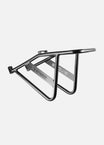

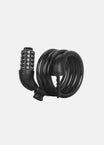
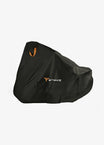
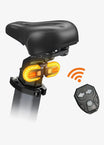
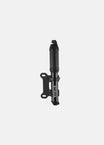

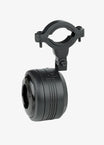
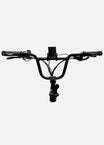



Leave a comment
This site is protected by hCaptcha and the hCaptcha Privacy Policy and Terms of Service apply.